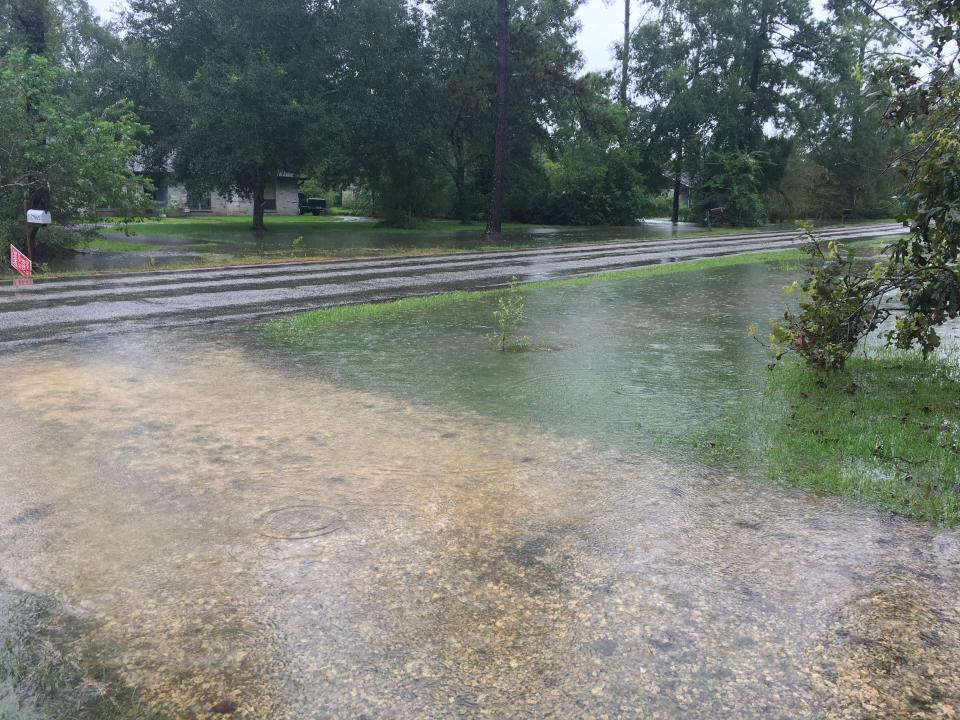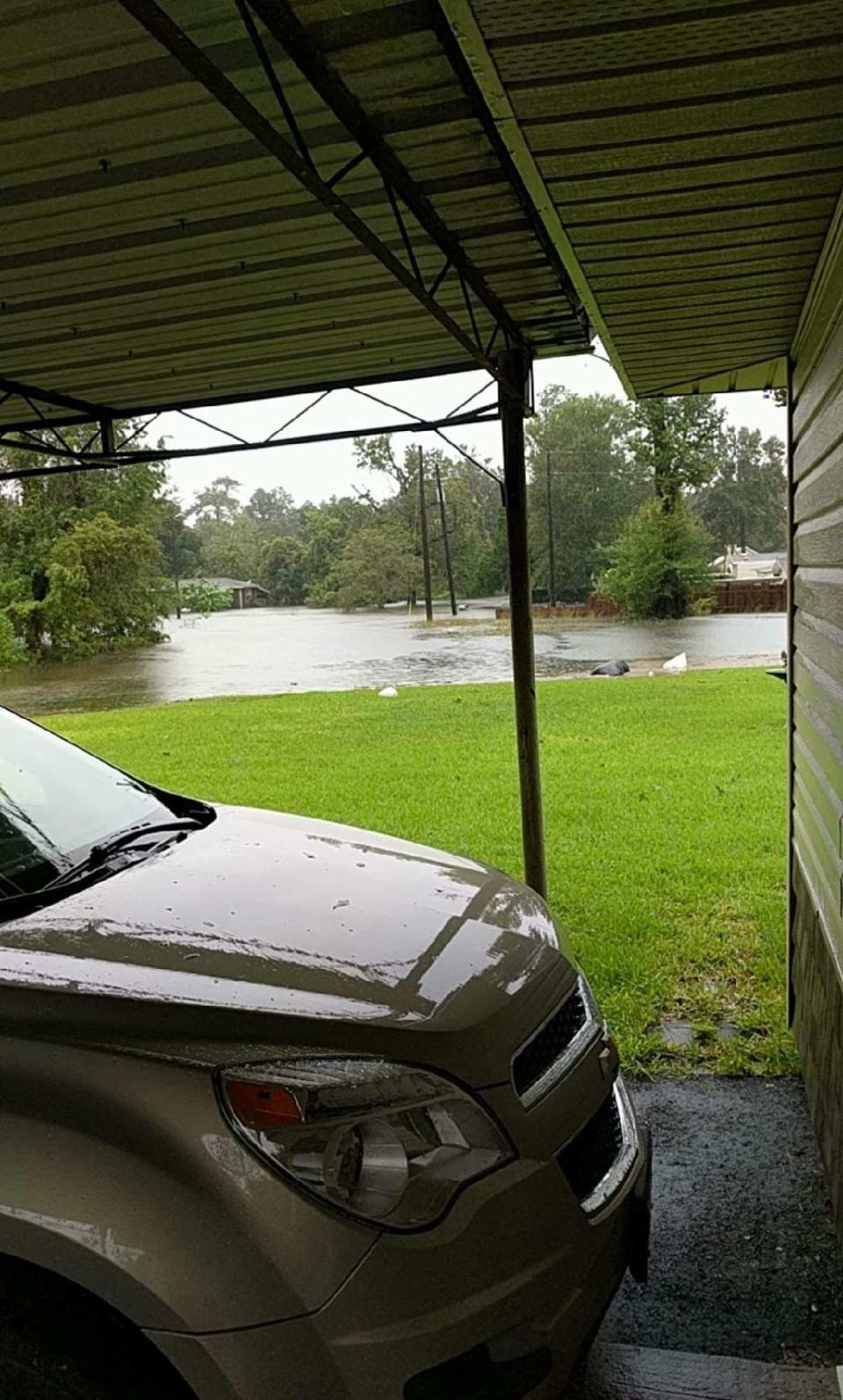How Harvey Deja Vu Guided Hurricane Laura Evacuees
BEAUMONT, TX — I had chosen to stay in town and ride out the storm, but it was almost too late when mandatory evacuation orders were issued for my neighborhood outside of Beaumont.
Horror stories about previous hurricanes couldn't deter me. Besides, the converted boathouse I lived in was several miles inland. "It never floods here," my landlord told me.
We really thought the worst of Hurricane Harvey was over. Forecasts said the storm would blow through Houston and be on its way. We never expected it would make an about face into the gulf, gain strength and camp over southeast Texas for days.
It overwhelmed the bayous. Upstream, dams were opened. Water hurtled toward us.
My mom was in town visiting me that weekend. I don't know if she chose to come to town anticipating the storm ahead, or if it was some kind of divine maternal foresight, but I'm glad she did.

It was she who begged me to leave when voluntary evacuation orders were issued. It was she who helped pack only a few hours later when my young landlady knocked on my door: "It's time to go. Now."
At its peak, the storm dropped over 60 inches of rain in southeast Texas in just a few days. There was no time to meticulously pack.
Pine Island Bayou behind my house had already crested, and water was rising fast. By the time we made it out of town and to Highway 69 north of Beaumont, water was lapping up on the sides of the road. In a few short hours, the roadway became an impasse.
The following day, the Beaumont Enterprise newspaper's cover was an aerial shot of the city, cut off on all sides, emblazoned with a simple headline: "An Island."
Before I made it back home to Dallas, the bayou behind my apartment had swelled, and the cozy reformed boathouse I called home for a summer filled with 6 feet of water.
Still, I count myself lucky. I was able to get myself and my belongings to safety, but I was only a few hours away from becoming stranded. Others were not so lucky.
One resident, Tom Melanson, was evacuated with his family from their home in Rose City, just a few miles outside of Beaumont.
"In the middle of the day, we received a knock on the door from someone saying we were under mandatory evacuation," Melanson told Patch. "That's when I noticed the water was already almost up to our hill. We were told we would expect 6 more feet of water once the dam was released."
Little did he know, it was already too late to leave by car. The family were evacuated by a rescue team in an air boat.
"I couldn't recognize anything while on the boat. Large yards full of grass looked like a big river," he said. "Street signs were gone; it just really looked like some other place."

Returning to Rose City after Harvey, Melanson said, was a nearly insurmountable chore. That's why, when Hurricane Laura and its "unsurvivable storm surge" approached the Texas gulf shore, he chose to take no chances.
Between the landfalls of Harvey and Laura, Melanson had moved West to go to work for a university in Houston.
"After [Harvey], the flooding, the rescue, losing everything that I owned and not being able to get assistance since I didn't rent or own property — the crazy long lines for groceries waiting in the heat — I made, and I mean made, my family agree that our evacuation plan was to just get out," Melanson said. "Once I moved to Houston I really cemented that plan because I had a westward base to jump off of for my family."
Melanson returned to Houston and his family to the Golden Triangle, a region surrounding the cities of Beaumont, Port Arthur, and Orange. To their relief, the storm had veered east and made landfall in Lake Charles, Louisiana, instead of Southeast Texas.
While 68 deaths are directly attributed to Hurricane Harvey, the latter storm claimed only 14 lives, the Associated Press reports. Whether that's the result of more time for planning, more foresight or the remnants of trauma leftover from Harvey is hard to say.
Even still, The Yale Center for Environmental Communication recently reported Laura was the fifth-strongest recorded hurricane to strike the U.S. mainland with sustained winds of 15o miles per hour.
While it largely spared Southeast Texas, Louisiana Gov. John Bel Edwards said recovery in the Pelican State will be 'very difficult.’
Nicholas Smith, a current Kansas resident whose family lives in northern Louisiana, told Patch he's never seen a hurricane have such an impact in him hometown.
"Laura was a Category 1 hurricane when it reached my family, which is over 170 miles north of Lake Charles," Smith said. "When it reached my hometown, its winds were still 70 miles per hour. My grandma called to tell me she’s never seen anything like it in her life. Trees and power lines covered yards and highways and not a single person had electricity once Laura was through."
Four days after the storm made its way through the region, Smith's family is still without power, attempting to stay cool in the late Louisiana summer.
"They’re struggling," he said. "To make matters worse, the storm exposed many of the rural community’s vulnerable infrastructure, particularly water and sewage."
Still, Louisianians like Smith's family are undeterred: "They’re a resilient people. They’ll come back; it’ll just take time and help," he said.
Today I count myself lucky to have left Bevil Oaks when I did. But, I know that if I had stayed I would have seen rescuers coming to the aid of complete strangers. I would have watched my neighborhood be rebuilt. I would have seen a community, together, starting over from scratch. Because that's what Texans do.
This article originally appeared on the Houston Patch

